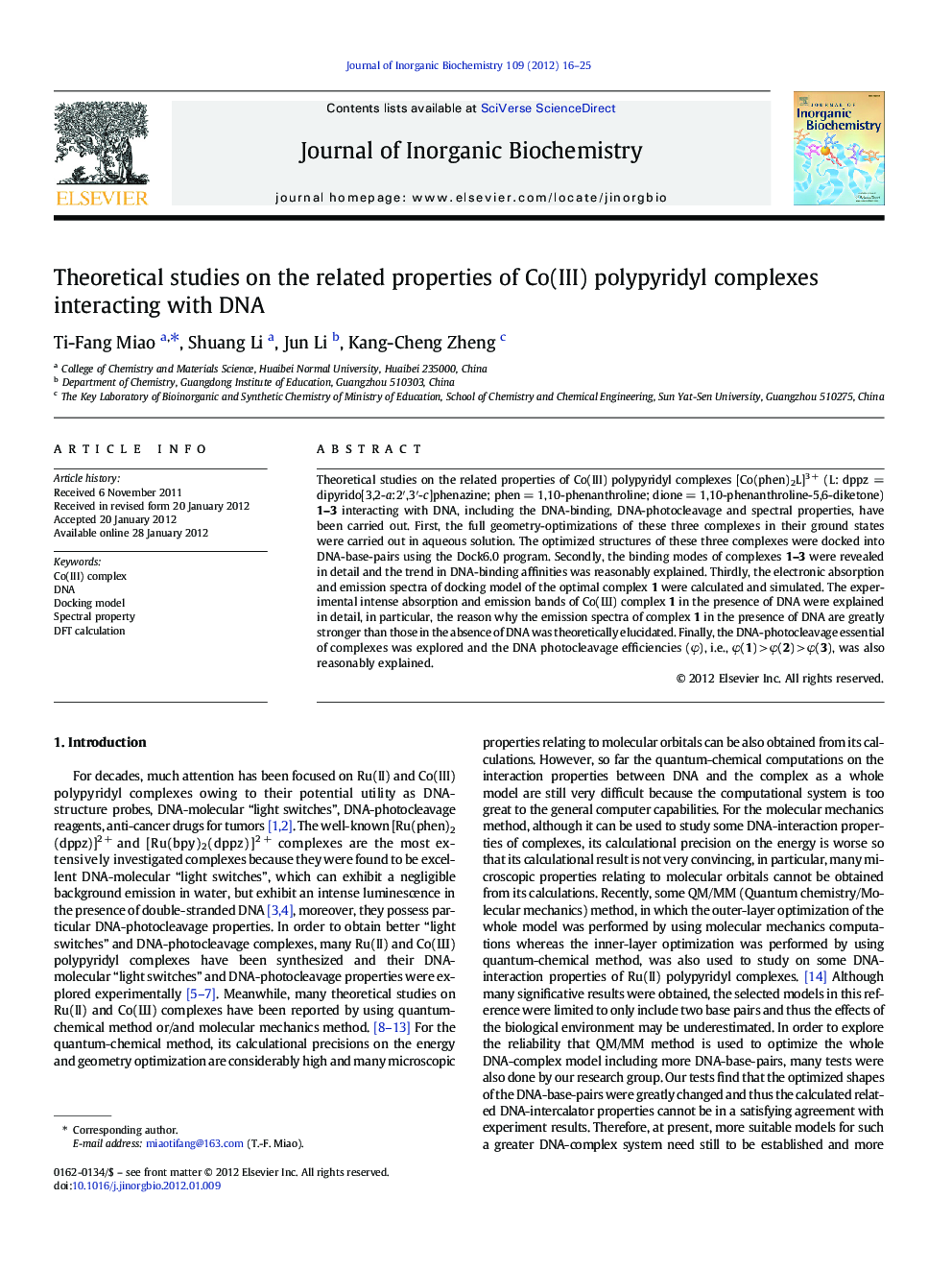| Article ID | Journal | Published Year | Pages | File Type |
|---|---|---|---|---|
| 1317775 | Journal of Inorganic Biochemistry | 2012 | 10 Pages |
Theoretical studies on the related properties of Co(III) polypyridyl complexes [Co(phen)2L]3 + (L: dppz = dipyrido[3,2-a:2′,3′-c]phenazine; phen = 1,10-phenanthroline; dione = 1,10-phenanthroline-5,6-diketone) 1–3 interacting with DNA, including the DNA-binding, DNA-photocleavage and spectral properties, have been carried out. First, the full geometry-optimizations of these three complexes in their ground states were carried out in aqueous solution. The optimized structures of these three complexes were docked into DNA-base-pairs using the Dock6.0 program. Secondly, the binding modes of complexes 1–3 were revealed in detail and the trend in DNA-binding affinities was reasonably explained. Thirdly, the electronic absorption and emission spectra of docking model of the optimal complex 1 were calculated and simulated. The experimental intense absorption and emission bands of Co(Ш) complex 1 in the presence of DNA were explained in detail, in particular, the reason why the emission spectra of complex 1 in the presence of DNA are greatly stronger than those in the absence of DNA was theoretically elucidated. Finally, the DNA-photocleavage essential of complexes was explored and the DNA photocleavage efficiencies (φ), i.e., φ(1) > φ(2) > φ(3), was also reasonably explained.
Graphical abstractTheoretical studies offer the theoretical explanation on DNA-binding, DNA-photocleavage and spectral properties of Co(III) polypyridyl complexes.Figure optionsDownload full-size imageDownload as PowerPoint slideHighlights► The whole models (complex-DNA) were obtained using the Dock6.0 program. ► The trend in DNA-binding affinities of complexes 1–3 was reasonably explained. ► The absorption and emission spectra of DNA-docking model were simulated. ► The emission bands of complex 1 intercalating DNA were explained in detail. ► The trend in DNA photocleavage efficiencies of complexes was reasonably explained.
